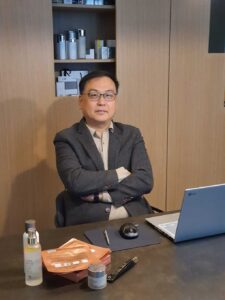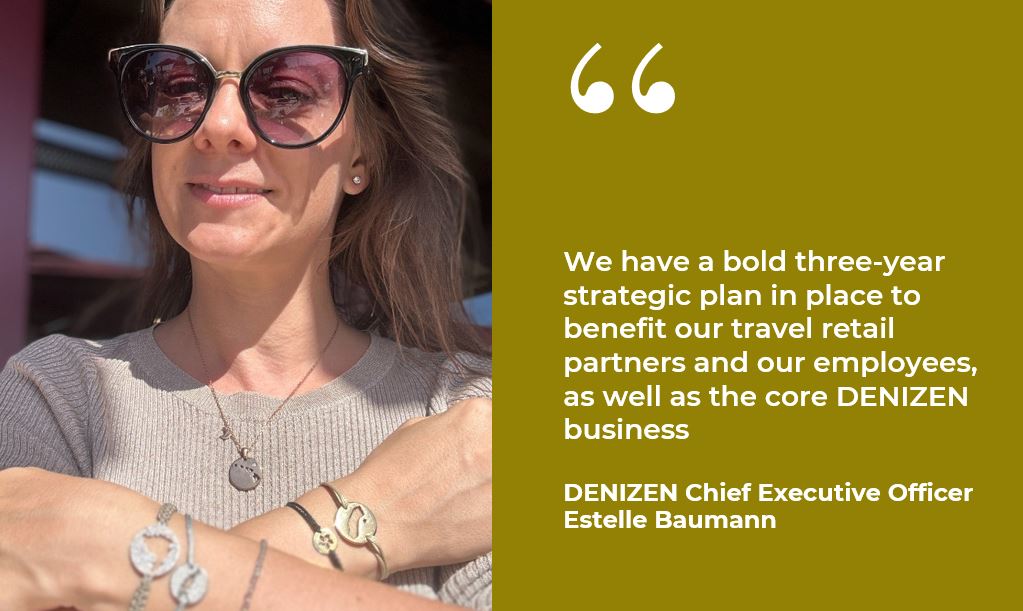
Allen Hong is one of South Korea’s most experienced travel retail executives. During a stellar 25-year career he has held senior roles for Lotte Duty Free, Walkerhill Duty Free, Hanwha Duty Free, City Duty Free and SM Duty Free; consulted for China Duty Free Group; and worked with brands, agencies and distributors.
Today he runs his own Seoul-based agency business, JLTR Co. In this guest article, he draws on his years in the sector to assess the Korean duty free industry’s state of health in light of far-reaching regulatory changes introduced on 1 February affecting the previously dominant daigou reseller sector.
The changes, created by Korea Customs Service (KCS), relate both to overseas bulk buyers and individual customers.
From 1 February, individual shoppers cannot buy more than 50 pieces of any SKU (i.e. bottles of alcohol, cartons of cigarettes, cosmetics (sets), and up to 50 other identical items) or ten bags and watches.
Simultaneously, shipping such goods by freight cargo (air and sea) out of Korea for individual B2C customers is now prohibited. Customers must now hand carry as in the pre-pandemic and pre-THAAD dispute (between China and South Korea) days.
Hong’s fascinating analysis puts the latest structural changes to the market in an important historical context.
Having commenced my career in the tourism sector at Lotte Hotel in the early 1990s, I transitioned to the company’s duty-free shops arm in 1999.
Since then, as an industry practitioner, supplier and consumer, I have witnessed the Korean duty free sector’s unprecedented growth on a global scale, along with several crises and market changes.
The regulatory changes introduced on 1 February this year are set to have a profound effect on the market and lead, as I contend later, to a normalisation of travel retail to one largely based on selling to the end consumer not the trader.

In the beginning
In 1980 the South Korean government introduced the innovative institution of downtown duty-free shops as a desperate measure to accumulate scarce foreign currency during the Republic’s early stages of development. This was essentially a response to the lack of industrial capital in a resource-deficient economic climate.

Lotte Duty Free opened its first downtown store on 21 January 1980, in a 794sq m store on the 8th floor of the Lotte Department Store in Myeong-dong, Seoul. At that time South Korea restricted – both legally and economically – the freedom of overseas travel for ordinary citizens, meaning most downtown duty-free shoppers were expatriates or Japanese tourists.
The Japanese wave
Japan experienced rapid economic growth in the 1970s, leading to a surge in overseas travel demand (which had been liberalised in 1964). Its near neighbour South Korea had high tariff barriers in place, resulting in significant price disparities between the local market and duty-free shops.

By stocking many imported high-end brands, Korean duty-free stores began to attract an influx of Japanese tourists, whose demand for luxury goods skyrocketed in the face of still prohibitive local market prices at home. Further buoyed by the 1988 Olympics in Seoul, Korean downtown duty-free shop businesses entered a period of explosive growth.
The Korean wave
Amid South Korea’s accelerated economic growth and democratisation in the early 1990s, the liberalisation of overseas travel led to a sharp spike in Korean demand for foreign trips.
Consequently, in the first decade of the 21st century Koreans began to comprise the majority of duty-free store customers, propelling the country’s duty-free market to become the world’s largest.
The Chinese wave
Around 2008, a significant surge in Chinese outbound tourism began, accompanied by a sharp increase in demand by its people for high-quality luxury foreign goods. Group tourism to South Korea, symbolised by Chinese tourists brandishing their national flag, soared.
This presented Korean duty-free shops with a new growth opportunity. To this day, the Korean duty-free market continues to be predominantly driven by demand from China, albeit as I will explain, in a very different form.

Licence proliferation
During this rapid market growth period, the South Korean government significantly lowered sector entry barriers by substantially – and controversially – increasing the number of downtown duty-free shop licences, starting in 2015.
As a result, powerful conglomerates such as Shinsegae Group, HDC Group, Hanwha Group and Doosan Group, along with smaller enterprises including Hana Tour and Gyeongbokgung – none of which had prior experience in travel retail – began to open downtown duty-free shops and expand into airport operations.

That sudden proliferation of licences led to intensified competition and unbalanced market conditions. Latecomers faced stiff challenges compared to early entrants, notably in terms of the restrictive entry policies of key suppliers.
The significant financial burden in terms of inventory procurement and the importance of scale in the duty-free industry meant many newcomers struggled to compete effectively, lacking consumer visibility and brand allure.
Harsh lessons were learned. Hanwha, for instance, withdrew from the market in 2018, while Doosan sold its stores to the Hyundai Department Store Group and withdrew from the travel retail industry altogether.

Enter the daigou
The new entrants faced two other key challenges. One was the narrowing of Korean duty free vs China local market price differentials due to brand expansion across the Mainland and the relaxation of tariff barriers there.
The other was the consolidation of travel agencies, which effectively acted as trade intermediaries by bundling daigou (purchasing agents, referred to as SG or ‘Small Guests’). The agents, drawn by the demands of these nocturnal businesses, continually increased discounts.


As a result, Chinese consumers began to purchase goods at lower prices from the comfort of their homes to the extent that the need for shopping tourism in Korea diminished significantly.
Consequently, the quality of individual shopping experiences declined further. Moreover, intense competition among retailers exacerbated the already deteriorating profitability.
THAAD crisis piles on the pain
Amid these developments, from late 2016 South Korea and China engaged in a tense diplomatic standoff over the deployment in the Republic (on Lotte Group land) of the US anti-missile system THAAD. As a result, the China National Travel Administration banned group travel to the Republic from 15 March 2017.

The political crisis, compounded by already low profitability and fierce competition, saw retailers experience drastic revenue declines.
Bulk daigou wave
Facing such extreme circumstances before even fully recouping expensive interior decorations of their new stores, both existing and new retailers began to turn their attention to large-scale daigou transactions.
This dynamic changed the face of the reseller market. As mentioned, driven by the expanded number of retailers in 2015, a wave of SGs had purchased goods to act as buying agents.
This involved buying products, particularly Korean cosmetics, on-site and then unpackaging them at the airport (after collection at the pick-up counters) before personally carrying them on flights to China. This method was commonly referred to as ‘hand carry’.

However, with the surge in Chinese demand for Korean cosmetics and other duty-free items, illegal sales methods became commonplace. These practices included purchasing Korean goods (mostly cosmetics) in downtown stores, cancelling flights, and reselling the purchased items in the Korean domestic market.
For imported goods, purchasing through hand carry remained the dominant methodology. In fact, until that point, the formal means of sending duty-free shop purchases abroad in bulk container shipments from South Korean duty-free shops was limited to official B2B wholesale transactions.
This method required formal customs declarations, complex export procedures, and corporate registration, which Chinese purchasing agents did not favour.
Korea Customs Service perceived the escalating volume of purchasing agency and daigou transactions from July 2016 as distorting the healthy market order. In response, they implemented a quantity restriction policy, limiting sales to 50 items per person per product category. However, despite these measures, travel agencies continued to expand their purchasing agency operations by operating large-scale group tours.
Korea Customs Services to the rescue
All that changed with the aforementioned THAAD crisis, when the absence of Chinese group tourists rendered purchasing agency business impossible.
This situation plunged the Korean duty-free industry into crisis. In response, Korea Customs Service allowed cargo shipments via air and sea in 2017, a method previously restricted to B2B transactions and returns. This easing of constraints was designed to protect newly invested operators and mitigate the impact of plummeting sales.
Subsequently, this shipment method became common practice for bulk transactions, serving as a means to facilitate large-scale transactions in the South Korean duty-free industry until the re-imposition of restrictions by the Korea Customs Service introduced with little notice on 1 February 2024. More on that later in this article.
COVID-19 – the mother of all crises
The Korean duty-free industry has faced many crises down the years but none on the scale or with the duration of the COVID-19 pandemic, which forced a prolonged near-total closure of the country’s borders. With inbound and outbound travel down to a trickle, the impact on duty-free sales was even more severe than during the height of the THAAD issue.
Assuming the pandemic was a temporary crisis, Korea Customs Service lifted the category purchase quantity restrictions that had been in place since 2016.
This decision, coupled with the earlier introduction of cargo shipments, transformed the market into a full-fledged bulk purchase market.

Furthermore, as the scale of daigou travel agencies expanded and individual transaction amounts increased, duty-free shops’ negotiating power weakened in the face of travel agencies’ demands for price reductions (or commission increases).
Consequently, selling prices gradually decreased. Following the COVID-19 pandemic, a combined discount and points reward system (the MG method), evolved into the SMG method, whereby daigou transactions were conducted at the original retail price without discounts, while high transaction brokerage fees were paid to travel agencies.
For duty-free retailers it was a double whammy, a combination of escalating patent royalties paid to the government as a percentage of sales, exacerbating their already eroded profitability.
Regulatory intervention
Eventually, citing reasons such as market disruption and the deterioration of transaction structures due to the proliferation of bulk transactions, Korea Customs Service restricted SMG transactions based on high commission structures starting from January 2023.
The regulator went even further with the new regulations introduced on 1 February this year, with the abrupt reinstatement of the per-person, per-item sales quantity limit and the restricting of cargo shipments to B2B transactions.
Under this scenario, only cosmetics products that have been in a bonded store for more than two months can be sold to wholesalers (three months for other products including liquor and tobacco). This marks a complete return to the pre-THAAD regulatory constraints and effectively ends the upwards trajectory of South Korea’s duty free market over the past decade that had been driven by bulk purchases.
Conclusion
After my decades of experience in the Korean travel retail industry, I believe the current crisis in the Korean duty-free sector stems primarily from excessive competition brought about by the country’s unique downtown duty-free shop system.
This system has resulted in a disproportionately large duty-free industry scale compared to Korea’s economic size. Duty-free shop operations in Korea require a licence granted by the government, making it a regulated industry and one fundamentally price-driven based on price differentials.
Due to the sector’s exclusive restrictions and inherent price competitiveness, the government believed back in 2015 that expanding the number of operators would further expand the market. However, the peculiar nature of the duty-free industry instead led to excessive – and in some cases failed – investments.
Consequently, retailers have been compelled to prioritise competition and market share rather than focusing on internal discipline and restraint during crises such as THAAD and the COVID-19 pandemic. Recent moves by Korea Customs Service to strengthen controls have prompted duty-free retailers to intensify their efforts towards diversification, focusing on free independent travellers and personalised demand.
These efforts include overseas market development (at least by Lotte Duty Free and The Shilla Duty Free), online and additional channel expansion, and wider business diversification.

The duty-free sector is an integral element of the broader travel retail sector. But for it to grow effectively and sustainably, products must be developed and sold in line with the consumption demands of genuine travellers – not traders.
Wholesale transactions based solely on prevailing offshore demand may offer temporary relief as a stop-gap measure to overcome crises. But ultimately they risk eroding future demand and saturating consumer purchasing desire. Duty-free retailers need instead to adopt creative approaches to engage consumers effectively, aligning with changing trends and styles of travel.
The good news is travel retail remains an essential and unyielding desire for mankind. While the Korean duty-free industry represents an extraordinary success story over the past 44 years, it must now focus on qualitative growth, leveraging its strength and experience to attract local and international travellers drawn by enticing product offers and alluring online + offline stores. ✈
Glossary of terms
Daigong: Surrogate purchasers who bulk purchase Korean and other duty-free goods to sell them back in China.
Hand carry: Purchase of duty free goods downtown for subsequent collection at airport pick-up points. The purchasers hand over the goods to traders removing outer packaging to save space and be able to carry more items onboard.
MG: Bulk trade based on discounts and cash back rewards. Usually shipped by cargo in large quantity. Heavily affected by the new regulations introduced on 1 February.
SG: Standing for ‘Small Guest’, this surrogate purchasing method is based on travel agency tourists using ‘hand carry’ and collecting the goods at departing ports.



